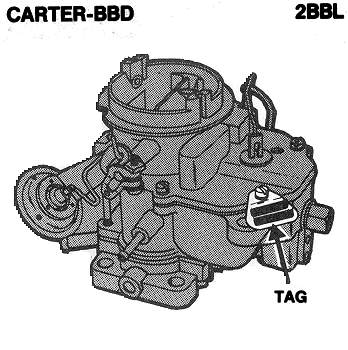After last weekend's oil pan/valve cover debacle, I was eager to get out there and fix it. Today, I finally had some time to do that. We left off with the driver's side valve cover leaking like the Exxon Valdez all over my exhaust manifold, and the passenger side still leaking like it did for years.

With the cover off, I made sure the head surface was clean as can be. Also, I got a better look at the valvetrain. There's no sludging up here, and it looks pretty clean.

This is what's left of the "Improved Design" rubber coated cork gasket that I installed last week. Not sure what's so "improved" about them, other than they leak a lot.

This is what I chose to replace them: the original-style rubber gaskets. Note the little tabs that fit into slots on the valve covers.

These fit A LOT better thanks to those retaining tabs. I applied a good amount of Ultra Black RTV and on it went. I had to massage the edges a bit while mated to the head with a hammer and a socket extension, but it's no longer leaking. Yay!

Onto the passenger side, which I did not touch last week. I thought the intake was leaking, and it may very well be, but so was this cover. The Wire Nut Bandit also used the "Improved Design" gaskets last time they were done, so yeah, oil was just pouring out in spots. To remove it, it's slightly more involved: you have to remove the vacuum assist and some hoses/wires to get it off. No big deal.

Ok, Mopar-inclined GRM'ers: This hole is where the heat crossover is on the head. Is it supposed to be open like this? Seems odd that it's just open like that.

Just like the other side was, this cover was gross inside and out. After lots of scrubbing/cleaning...

It cleaned up to much more acceptable condition. Again, with some small tweaks...

It went back on without much drama and the new gasket worked well!
I let it run for a while, and it seemed like it was burning off more smoke than it leaked after the residual stuff from the valve covers burned off. Could it still be leaking? And if so, from where?

You have to be kidding me. Somehow, the oil pan sprouted a pinhole leak after sitting for a week. What the BERK.

All oil pans are special order items everywhere, so if I was going to do Truck Stuff anytime soon, I needed to seal that pinhole up with something until I can get a new pan. So, let's play the Oil Pan Sealant Dating Game! Bachelor #1 is a two-part play doh-like epoxy called Qwik Steel that can be used on metal. Bachelor #2 is the tried-and-true JB Kwik that sets up real fast. And Bachelor #3 is another two-part epoxy putty called Water Weld that loves working underwater! The Power Wagon chose Bachelor #1 because it says "Oil Pan" right on the label.

If you squint, you can see the pinhole. After draining the pan, I prepped the pan as well as I could and started kneading the putty.

I spread a liberal amount of the putty across the entire area to ensure good coverage. After letting it sit for a few hours (it cures in one hour, but I gave it a bit more just in case), I added new oil and so far, no leaks. I will check it in the morning before I call it good. Not pretty, but have you seen the rest of this truck?
A couple of other random notes:
-Went to the junkyard yesterday, and found a factory steel battery tray for $10! It has one slightly dented edge and needs to be prepped and painted, but still, score!
-While at the yard, I inquired about getting a rebuildable engine core, specifically a Magnum 360 out of a 1994-up Ram. A core goes for $150 for just a rebuildable long block, or I can get a running one for $300. Since I'd be tossing a carb on it anyway, I would probably just get the rebuildable core. Hoping to pick one up sometime soon to peck at and refresh for the truck.









































































